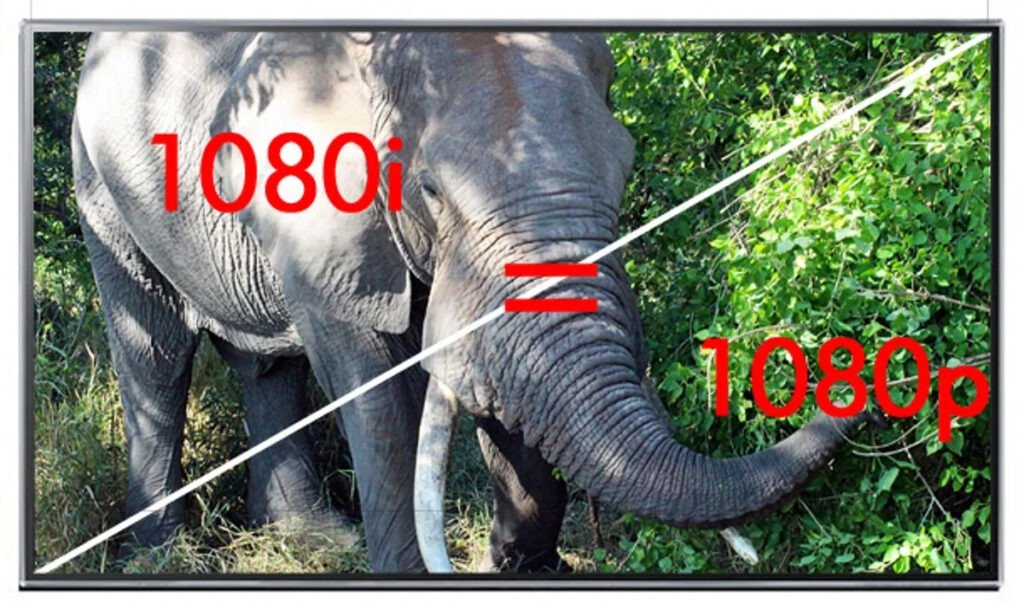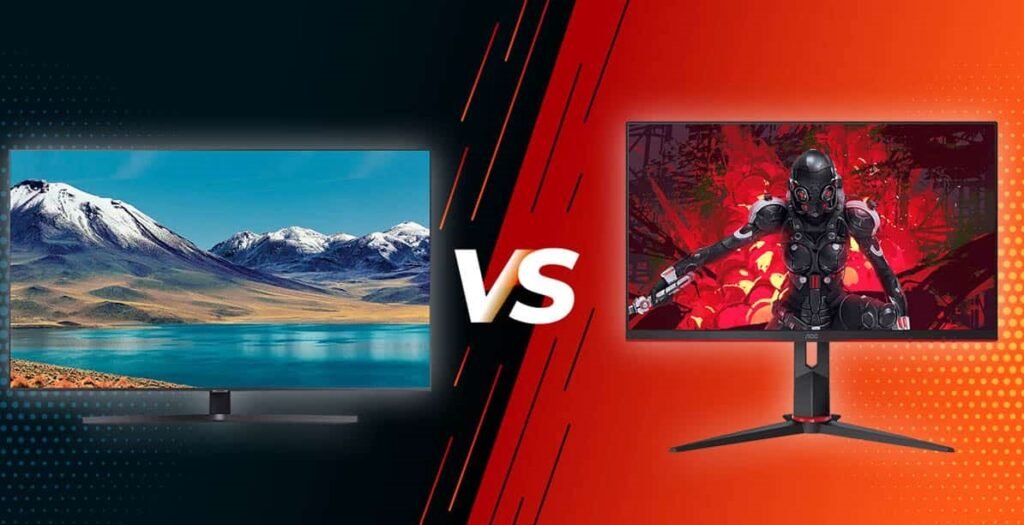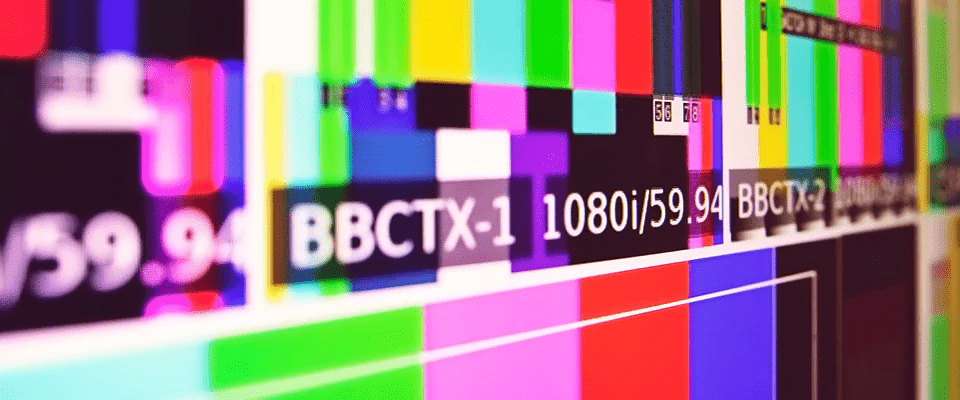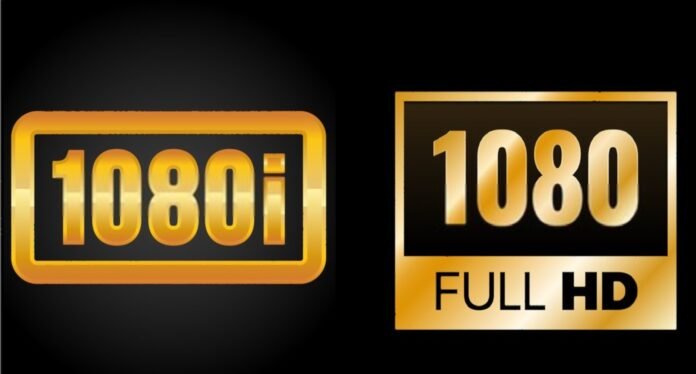The terms 1080i and 1080p are often used when talking about the picture quality of a TV or monitor . But did you know that they are two image formats ?
1080i interlaced and 1080p progressive scan are both high definition (HD) image formats they differ in the way the image is displayed on the screen.
How does 1080i work?

1080i is an image format that displays 50 or 60 frames per second (depending on what region of the world you are in), but each image is displayed on the screen in two stages. The first step displays the even lines of the image, while the second step displays the odd lines. This means that each image is displayed in two separate parts, which may cause some blurring or flickering when watching fast-moving content.
This article might interest you: Repairing horizontal lines on a PC screen
How does 1080p work?

1080p, on the other hand, is an image format that displays each image in its entirety, without dividing it into two parts. This allows for a sharper, sharper image, especially when watching fast-moving .
Which format is better: 1080i or 1080p?
So which of these two formats is better? It depends on your usage.

If you mainly watch static content , like TV shows or movies , 1080i may be sufficient. The difference in image quality between 1080i and 1080p will be less noticeable in this case.
fast -moving content , like video games or sports , 1080p is the better choice. The sharper and sharper image will provide a superior viewing experience when the action is fast-paced.
What other elements should you take into account?

There are a few other things to consider when choosing between 1080i and 1080p:
- Resolution : Both 1080i and 1080p have a resolution of 1920 x 1080 pixels, which means they both have HD picture quality. However, because 1080p displays each frame in full, it can provide a slightly sharper and more detailed image.
- Compatibility : It is important to check if your TV or monitor is compatible with 1080p . If your device is not compatible, it will not be able to display 1080p, even if you have access to 1080p content.
1080i vs 1080p: refresh rate

Refresh rate is an important consideration when comparing 1080i and 1080p formats . Refresh rate is the number of frames that are displayed on the screen per second, and it can have a big impact on picture quality and the viewing experience.
The 1080i displays 50 or 60 frames per second (depending on what region of the world you are in), while the 1080p also displays 50 or 60 frames per second. This means that in terms of refresh rate, there is no significant difference between the two formats .
However, it is important to note that 1080i displays each frame in two steps, while 1080p displays each frame in full. This means that even though the refresh rate is the same, the image quality may be different. 1080p provides a sharper, sharper picture, especially when watching fast-moving content, because each frame is displayed in full.
This article may interest you: High refresh rate monitor
1080i vs 1080p: What's the difference in compatibility?

It's important to check if your TV or monitor is compatible with 1080p before deciding to upgrade to this format. If your device is not compatible, it will not be able to display 1080p, even if you have access to 1080p content.
Many TVs and monitors are compatible with both 1080i and 1080p , but it's always important to check before making a purchase or upgrading your equipment. If you have an older TV or monitor, it may only be compatible with 1080i. In this case, you may need to upgrade your equipment to be able to enjoy 1080p.
1080i vs 1080p: What's the difference in content availability?
It's also important to check if the content you're watching is available in 1080p. If you only watch 1080i content, there's not much reason to spend the extra money on a 1080p compatible device.
Many TV channels broadcast content in 1080i , but there is also increasingly 1080p content available for streaming and on Blu-ray discs . If you're interested in 1080p and want to experience the best picture quality possible, it might be worth checking if the content you're watching is available in 1080p before making your decision.
1080i vs 1080p: What's the Difference in Video Encoding?

Video encoding is an important consideration when comparing 1080i and 1080p formats. Video encoding is the process of compressing and decompressing video data to make it easier to store and distribute. There are different video codecs that can be used to encode and decode video data.
1080i and 1080p can be encoded with different video codecs. The most commonly used video codec for 1080i is Interlaced H.262 , while the most commonly used video codec for 1080p is Progressive H.264 . These codecs are both effective at encoding and decoding video data, but they both have their advantages and disadvantages.
- The H.262 codec (used for 1080i) is relatively old and has been widely used in televisions and DVD players for many years. It is known to be effective in encoding and decoding video data, but it can cause loss of image quality during compression.
- The H.264 codec (used for 1080p) is newer and was designed to be more efficient than the H.262 codec. It is known for being able to encode and decode video data with minimal quality loss, making it an excellent choice for 1080p.
It is important to note that the video codec used is not the only element that determines the quality of the image. Other factors such as resolution, refresh rate and quality of the source content can also impact image quality.
1080i vs 1080p: What's the difference in data transmission?

Data transmission is another thing to consider when comparing 1080i and 1080p formats. Data transmission refers to the process of transferring video data from one point to another, whether by streaming over the Internet or using physical media like a Blu-ray disc .
1080i and 1080p can be transmitted in different ways, but there are some differences to be aware of.
1080i is generally transmitted at a lower data rate than 1080p , meaning it requires less bandwidth to stream. This can be a benefit for people who have a low-speed Internet connection or want to save storage space on their hard drive .
1080p , on the other hand, is typically transmitted at a higher data rate than 1080i , meaning it requires more bandwidth to stream. This can be an inconvenience for people who have a low-speed Internet connection, but this can be offset by the superior picture quality offered by 1080p.
Conclusion
In summary, 1080i and 1080p are HD image formats that have their advantages and disadvantages. The 1080i displays each frame in two stages, which may result in some blurring or flickering when watching fast-moving content. 1080p, on the other hand, displays each frame in full, resulting in a sharper, more precise image. The best option depends on your usage and personal preferences.
In addition to the difference in image quality, there are also differences in video codecs and data transmission between 1080i and 1080p. 1080i is typically encoded with the H.262 codec and is transmitted at a lower data rate, while 1080p is typically encoded with the H.264 codec and is transmitted at a higher data rate. These differences can impact image quality and ease of content delivery.
It's important to consider these differences when choosing between 1080i and 1080p . Ultimately, the best option depends on your preferences and how you plan to use your device.
If you primarily watch static content and are happy with the picture quality of 1080i , it may be more beneficial to stick with that format. If you plan to watch a lot of fast-moving content and want higher picture quality, 1080p may be the better option.




